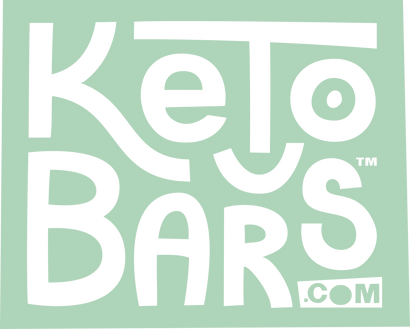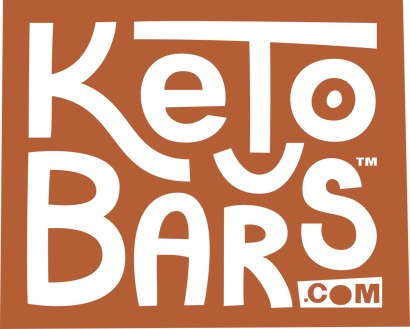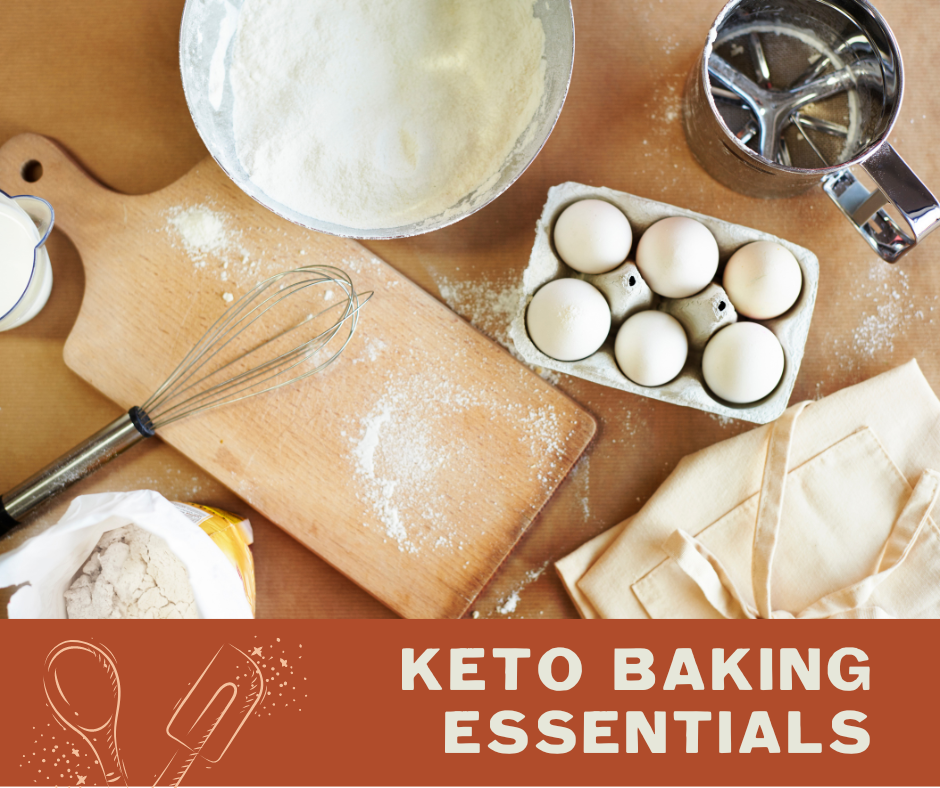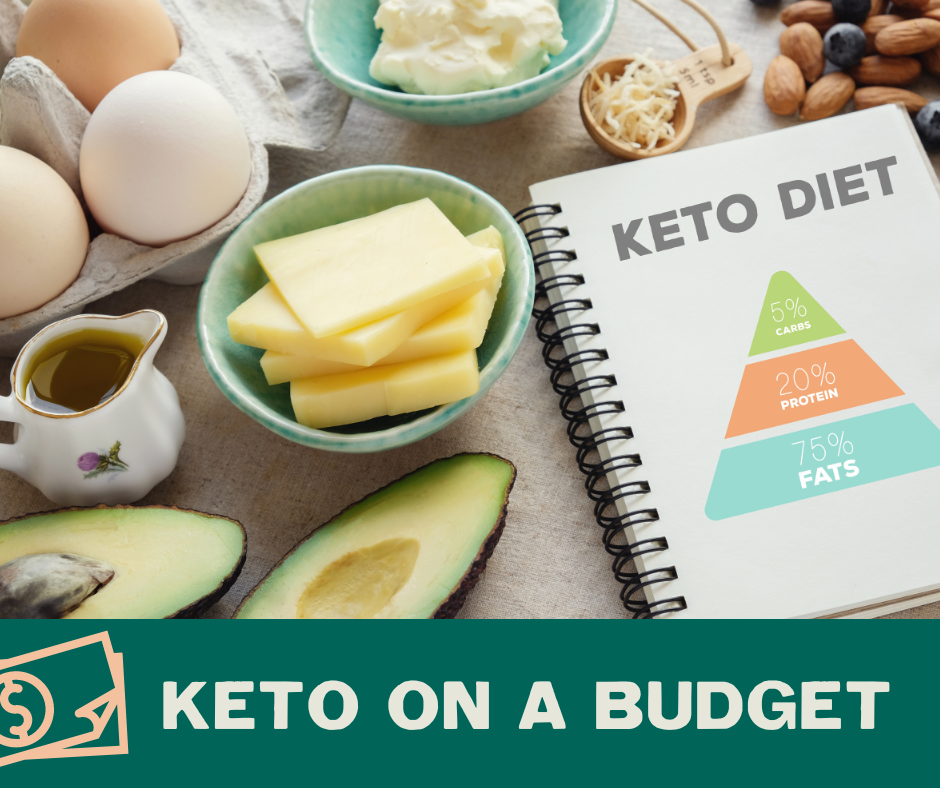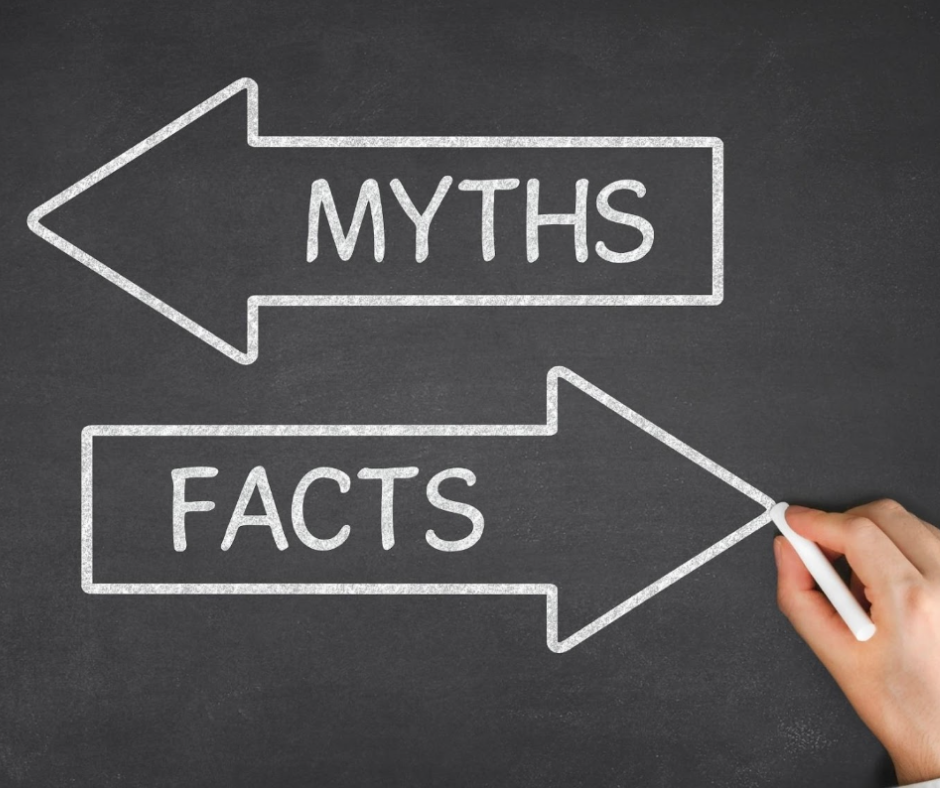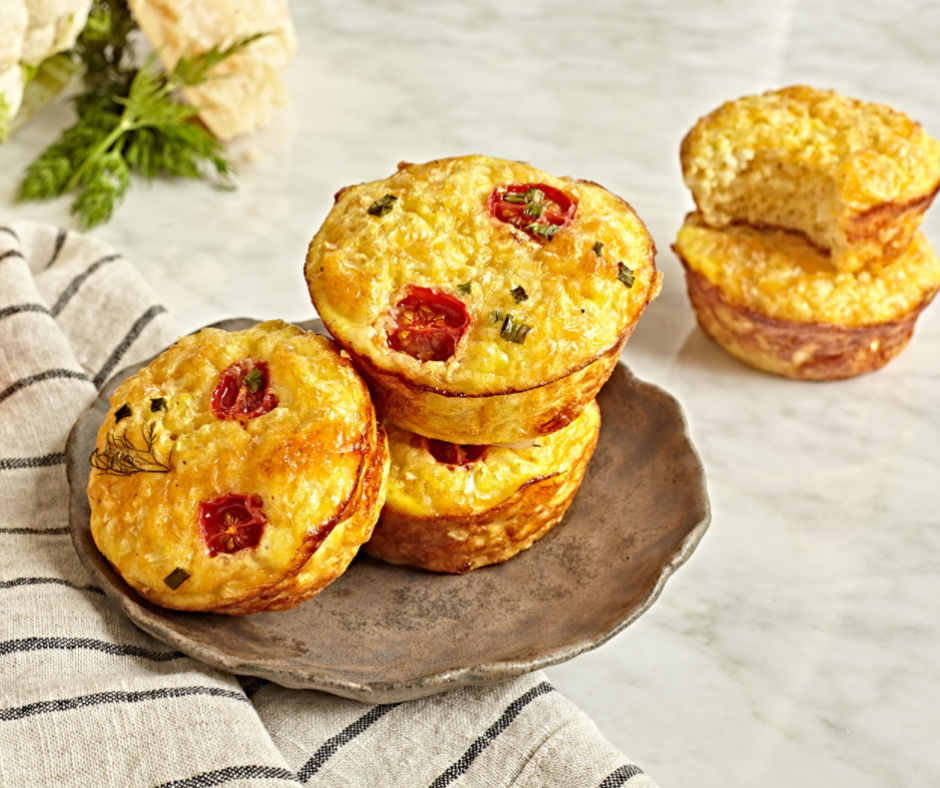Intermittent Fasting And Keto Combined For Weight Loss

Questions Answered:
• How to do intermittent fasting on keto?
• What is intermittent fasting keto?
• What meal do you eat to break intermittent fasting on keto?
• Do you have to do keto while on intermittent fasting?
• What is the difference between intermittent fasting and keto?
If you’ve been on the keto diet for a while, you’ve probably heard about intermittent fasting. Some experts suggest that combining these two eating styles could send your fat-burning into overdrive and turn you into a well-oiled machine.
While there’s a lot of potential benefit in combining these two meal plans, it’s possible to overdo it, wreck your adrenals, and send your hormones spinning out of balance. Understanding the nuances of these two diet plans is critical to using them effectively and avoiding harm to yourself.
This comprehensive guide to the ketogenic diet and intermittent fasting will help you understand both diets, how they work and why, and what benefits you might receive from using them in conjunction with each other.
What Is The Ketogenic Diet?
The ketogenic diet (also known as the keto diet) is a very low-carb, high-fat diet. In most versions of the diet, eaters are restricted to between 20 and 50 grams of net carbohydrates per day for a 2000 calorie diet. This roughly breaks down in macronutrients like this:
• 55% - 60% fat
• 30% - 35% protein
• 5% - 10% net carbohydrates
Net carbohydrates take into account fiber and sugar alcohols and their smaller effect on blood sugar and ketosis. To calculate net carb intake, take total grams of carbs and subtract grams of fiber. That number is the net carbs for that serving of food. If the food contains sugar alcohol like erythritol, you’ll subtract half the grams of sugar alcohols from total carbs to reach net carbs.
If you’re trying to lose weight using the keto diet, you’ll still need to maintain a calorie deficit, but the idea is that by eating this way, your efforts will be much more effective than simple calorie restriction.
History
The ketogenic diet was first developed in 1921 for epileptic children to combat seizures. Pioneering doctor and researcher, Dr. Russel Wilder, found that by restricting carbohydrates and inducing a state of ketosis, his epileptic patients could arrest their seizures.
This diet was later adapted to help obese patients with type 2 diabetes lose fat and control their blood sugar and insulin levels. Other potential health benefits of keto that are being explored scientifically include helping arrest the growth of certain cancers, improved cognitive function, improved cardiovascular health, and possibly even staving off symptoms of Alzheimer's and Parkinson's disease.
Ketosis
Getting into a state of ketosis is the main objective of the keto diet. Ketosis is a metabolic state that occurs when your body ceases using glucose for fuel and switches to ketone bodies produced by the liver to give you energy and power your brain.
Ketone bodies (also called ketones) are acids converted from fat through the liver. When you change your body’s fuel source from carbohydrates to fat, you stop burning glucose, deplete your glycogen stores, and begin burning ketones for energy.
This process jump-starts the fat-burning process in your body, which accelerates weight loss. It also allows you to avoid blood sugar spikes and drops that come with eating carbohydrates and the resulting surge of insulin that comes with that. As a result, you can regain any lost insulin sensitivity while jump-starting fat loss.
For this reason, many proponents of the keto diet say that energy levels soar on keto, due to the fact that ketones are a superior and more efficient energy source than glucose for your brain and your body.
Foods To Eat On The Keto Diet
The keto diet places a huge emphasis on healthy fats as the primary component of your diet. The simplest way to say it is high-fat, moderate protein, very low-carb. But those terms can be vague. So having a list of go-to foods that you know you can eat can be super helpful.
From there, you can get creative, and even try making some keto treats with keto-approved sugar-free sweeteners. This isn’t an exhaustive list of food choices, but it’s a great place to start to get the ball rolling, and you can use this list to give yourself guidelines to follow when creating recipes or ordering from a restaurant.
Healthy Fats
Healthy fats to prioritize on the keto diet include:
• Coconut oil: great for frying, baking, sauteing, and adding to fatty coffee. Opt for extra virgin when possible.
• MCT oil: derived from coconut, but much more volatile when exposed to heat and light. Use this only in fatty coffee or salad dressings. No cooking.
• Red palm oil: great for all types of cooking, even high heat. It has a distinct flavor, so you’ll want to test it out first. Make sure you’re buying sustainably harvested red palm oil, as improperly grown and acquired varieties are terrible for the environment.
• Avocados and avocado oil: avocado fruit is rich in both fat and fiber, perfect for this diet. Use avocado oil for all forms of cooking except very high heat. It’s also great in salad dressings and homemade mayonnaise.
• Ghee: great for all forms of cooking, including high-heat. Ghee is clarified butter, so the more sensitive sugars and proteins have been removed to allow for high-heat cooking. Make sure you buy ghee from grass-fed cows to avoid the chemicals associated with large-scale ranching and farming practices.
• Butter: perfect for low- and medium-heat cooking, baking, and fatty coffee.
• Coconut butter or mana: made from the pressed and ground meat of a mature coconut, including the oil. This is a great addition to baked goods or can be a delicious substitute for sweet treats on the keto diet.
• Extra virgin olive oil: best used for low- to medium-heat cooking and salad dressings.
• Omega-3 fish oil and flax oil: both ideal for supplements or to be added to salad dressings or smoothies (probably stick to the supplements for the fish, unless you like fishy smoothies). These oils are very volatile and need to be kept in the refrigerator and shielded from too much light exposure.
Healthy Proteins
Healthy proteins on the keto diet can include fatty cuts of meat as long as they come from healthy animals. Since the keto diet is so fat and protein-focused, quality is intensely important on this diet.
Research shows that animals (and humans) store toxins in fat cells. The term bioaccumulation means that as you move up the food chain, you see the accumulation of toxins in body fat tissue. That’s because certain chemicals and elements (like mercury in larger species of fish) pass from the prey to the predator. This is true for humans too. If you are eating animals that accumulated toxic burdens in their lifetimes, you are acquiring those burdens by eating them.
So high-quality, organic livestock (ideally pasture-raised or grass-fed), chicken, and eggs are all at the top of the list for the keto diet. Additionally, wild game and wild-caught small fish are good sources of protein on the keto diet.
Healthy Carbohydrates
Keto-friendly carbohydrates are those that have a lot of fiber and very low or no starch. None of these foods have zero net carbs, so they will add up if you overdo it. Stick to leafy greens to keep the lowest possible carb count while still maintaining a nutrient-dense diet. In other words, don't skimp on veggies, or your health will suffer on this diet.
Fruits are generally off-limits, but it’s ok to eat small amounts of berries:
• Blueberries
• Strawberries
• Blackberries
• Raspberries
Keto veggies include:
• Leafy greens and lettuces: spinach, chard, radicchio, endive, arugula, frisee, all types of lettuce
• All cruciferous vegetables: broccoli, cauliflower, kale, collards, broccoli raab, rapini, kohlrabi, Brussels sprouts, cabbage in all colors
• Peppers: all colors of bell peppers, all chilis
• Eggplant
• Green beans
• Summer squash: zucchini, yellow crookneck, straight neck, and sunburst
• Spaghetti squash
• Asparagus
• Olives
• Mushrooms
• Celery root
• Pumpkin (pumpkin is the only winter squash allowed on the keto diet)
Nuts, Seeds, and Full Fat Dairy
Nuts and seeds are sort of the cross-sectional food of the keto diet. They have all of macronutrients: protein, fat, carbs, and calories. They’re a great keto snack, but the calories and carbs can add up. All nuts are keto-friendly in moderation, offering healthy fats and proteins, and moderate carbs.
Full-fat dairy is also a cross-sectional food that offers both protein and fat. Follow the same rules for full-fat dairy as you would for meats. Stick to heavy cream, full-fat aged cheese (the low-lactose varieties), and full-fat yogurt. These are also pretty high-calorie foods that you shouldn’t overdo if weight loss is the ultimate goal.
If you find that your weight loss is stalled out on your keto diet, you should consider removing nuts, seeds, and dairy to see if they’re impeding your progress or causing your ketone levels to drop.
Sweeteners
Ideally, part of your keto experience will be to retrain your pallet not to need super sweet foods all the time. That being said, sometimes you need a treat. Choosing the right type of sweetener can help you indulge in your craving without wrecking your progress or kicking you out of ketosis.
Acceptable sweeteners include:
• Erythritol
• Monk fruit
• Stevia
What Not To Eat On The Keto Diet
Foods to avoid on the keto diet are pretty vast. It can feel overwhelming at first, but focusing on what you can eat (rather than what you can’t) will help you get over the hump at the beginning of your keto journey. That being said, it’s important to point out the hidden landmines that could sabotage your progress if you’re not careful
Processed Meats
Many processed meats contain hidden carbs and additives that will sabotage your progress. You want to make sure that if you’re eating bacon, sausage, or salami, you know exactly what’s in it. Avoid added sugars, added starches like maltodextrin, or any other things on the label that don’t look like food. It’s best to keep processed meats to a minimum, but if you’re eating them, make sure you’re following the rules we laid out above about quality.
Condiments
Not all condiments are off-limits, by any means. But condiments are a good place to find hidden carbs. Pay special attention to nutrition facts and food labels to avoid hidden sugars and starchy additives. This is true for spices as well. Most individual spices are ok on the keto diet, but you can get caught up if you use a mixture that has starchy separators that you might not be considering.
Alcohol
Alcohol is a tricky one because most distilled spirits are carb-free. If you must imbibe, stick with these, and steer clear of wine and beer. The problem with alcohol, however, is that even if it’s carb-free, it slows down fat-burning. When your body processes alcohol, your liver focuses on clearing that out before anything else.
While it’s doing that, it’s not creating ketones, so if you’re drinking consistently, you’re hindering ketosis. It’s also worth considering that drinking reduces inhibition, so if you’re drinking and decide you want a snack, there’s a decent chance you’ll opt for some non-keto late-night options. This isn’t to say that this will always happen, but it’s worth thinking about. An occasional drink from time to time is ok, but alcohol isn’t meant to be a staple on the keto diet.
Low Fat or Fat Free Dairy
These items have more lactose than their full-fat counterparts. They also have fewer fat-soluble vitamins, due to their lower fat content. Since lactose is a sugar, you want to avoid low-fat and fat-free dairy to avoid kicking yourself out of ketosis.
Anything High In Carbs
All high- to moderate-carb foods are off-limits on the keto diet. This includes healthy carbs like sweet potatoes, winter squash, legumes, and whole grains. Processed foods are also out. This list isn’t comprehensive, but it should give you an idea of what to avoid:
• All grains: quinoa, millet, wheat, rye, spelt, rice, corn, amaranth, what berries, etc.
• Beans and lentilsAll pasta (except shirataki and zoodles)All bread (except keto-approved recipes)
• Chips and crackers
• Potatoes and sweet potatoes
• Winter squash: acorn, butternut, delicata. (pumpkin IS allowed)
• All sweets: ice cream, cookies, cake, brownies, candy, etc.
The good news is that there are tons of recipes online that can help you feel like you’re eating these foods by using creative substitutions that remain keto-friendly.
Types Of Ketogenic Diets
There are four main ways to practice the ketogenic diet: Standard Ketogenic Diet (SKD), Targeted Ketogenic Diet (TKD), Cyclical Ketogenic Diet (CKD), and High-Protein Ketogenic Diet (HPKD). Each of these focuses on staying in ketosis as much as possible, but the latter two allow for more carbs or protein at certain points.
Standard ketogenic diet (SKD): a very low-carbohydrate with moderate-protein and high-fat diet. This diet typically contains 70% fat, 20% protein, and only 10% carbohydrates. It’s the most common form of the keto diet and also the most studied.
Cyclical ketogenic diet (CKD): allows for periods of higher-carbohydrate intake between the keto cycles to allow for carb re-feeding. Most commonly, a CKD eater would have five ketogenic days followed by two high-carbohydrate days as one cycle. This way of eating may increase long-term compliance, but more studies need to be done to better understand it.
Targeted ketogenic diet (TKD): allows for additional carbohydrates before an intense workout. Right before strength or endurance training, you would select a very easily digestible carbohydrate to boose glycogen production, theoretically to improve performance (or avoid poor performance that a lack of glycogen may cause).
High-protein ketogenic diet (HPKD): includes more protein than SDK, usually used if a dieter experiences a loss of energy or muscle mass. The ratio for this version of keto is around 60% fat, 35% protein, and 5% carbohydrates. This way of practicing keto is closer to the Atkins diet, which allows for more protein than SDK.
Intermittent Fasting
Intermittent fasting is exactly what it sounds like: fasting in intermittent spurts. Clinical trials have shown that intermittent fasting (IF) is more effective than calorie restriction for weight loss in most people. That being said, smaller eating windows could also result in eating fewer calories. Health benefits of IF include reduced inflammation, improved brain function, and improved blood sugar control.
There are a number of ways to perform intermittent fasting, but the idea is to restrict your eating window to allow your body to burn fuel for long periods between meals. During your eating window, you're ideally eating whole, nutrient-dense foods rather than junk food. Here are five of the most popular ways to practice intermittent fasting.
#1: Leangains Protocol, or the 16/8 Method
With the Leangains version of IF, you eat during an 8-hour window and fast for 16 hours. This method can fudge a little bit in either direction, so 14/10 or 15/9 also works.
During your eating window, you can either eat two or three meals. Ideally, you’re not snacking for the whole window. This method can be pretty easy to follow just by having an early dinner and a later breakfast. Or, if you’re able to skip breakfast, that works too. It's ok to drink water, black coffee, herbal tea, or even bone broth in some cases during the fasting window.
Women should only fast for 14 to 15 hours at a time, due to their more complicated hormonal makeup. While there's a lot of good research on the efficacy of intermittent fasting, much of it is done with male subjects (this is also true with keto), so it's important to take sex into account when planning your diet. This isn't to say that fasting doesn't' work for women, it's just to say that women have more to consider, especially premenopausal women. There's preliminary evidence that menopausal and postmenopausal women may find more success with both IF and keto, due to their lower levels of estrogen.
#2: The Fast Diet, or the 5:2 Diet
For the Fast Diet, the numbers refer to days rather than hours. So for five days, you're eating a healthy diet, and for two days each week, you're restricting your calories to 500-600 per day (500 for women, 600 for men).
The two fasting days don't need to be consecutive, and probably shouldn't be to improve compliance. There isn't any scientific research that explains how, why, or whether this form of IF works as well as other forms, but there's a lot of anecdotal evidence that shows results.
#3: Eat-Stop-Eat
This is way of eating is a more aggressive form of the Fast Diet. Eat-Stop-Eat involves the same five or six days of eating well, but on fasting days, you're abstaining from food entirely for 24 hours. The recommended way to do it is to fast from dinner to dinner. Make your dinner one night your last meal of the day, then don't eat again until dinner the next night. This way, the 24 hours still involves eating at the end. The allowable items are the same as the Leangains diet: water, coffee, herbal tea or other non-caloric drinks.
This diet could create the temptation to load up on food during your eating days to make the fasting day easier. If you're fasting for weight loss or fat loss, try not to do that, or you'll sabotage your goals. The end result of this type of IF is not only the long break from eating, but the calorie restriction that comes with eating fewer meals in a week.
#4: The Warrior Diet
The Warrior Diet was developed by Ori Hofmekler, a former member of the Israeli Special Forces. The idea is to restrict calories all day and then eat a big dinner at night. Hofmekler ate small amounts of raw fruit and veggies in the day time, keeping total calories extremely low, then loaded up at night. The real eating window for this diet is basically only 4 hours, but you're encouraged to go for it and "feast" in that window. Foods you eat in this period of time should remain healthy and unprocessed. While this method of fasting doesn't have exhaustive research to back it up, there's reason to believe that skipping meals is good for reducing fat stores.
#5: Alternate Day Fasting
This one isn't for beginners. It basically involves eating and fasting every other day. Some versions of this one allow for small amounts of food during the fasting days (like 500 calories or so), but some require full abstinence on fasting days. The time frames for fasting and eating are both 24 hours. Abstaining from food every other day is likely not for the faint of heart, so proceed with caution for this one. This method of eating has been studied and shown to be more effective for fat loss than calorie restriction, but adherence can be pretty difficult.
Combining Intermittent Fasting with the Ketogenic Diet
Now that you have a solid foundation for both the keto diet and IF, you can probably guess how to combine them. By eating a very low-carb diet during your eating windows for IF, you can successfully combine these methods. Your keto meals can fit into the IF schedule easily, as high-fat keto foods are really filling and can keep you feeling full and satisfied between meals and for most of the fasting period.
In fact, if you've been doing keto for a while, you may notice that the distance between your meals has naturally lengthened. That's because, in the absence of insulin spikes and drops, you're no longer feeling intense cravings or hunger pangs. That can come in handy if you're attempting to create a big eating gap every day (or every few days, depending on the method you choose.
Benefits of Combining Intermittent Fasting and Keto
In addition to your change in appetite, there are other potential benefits to combining IF and keto. For one, fasting promotes ketone production just like keto does, so doing both could turbo-charge results. While fasting, your body naturally reduces the production of insulin and glycogen and promotes fat-burning instead. It's a win-win.
Furthermore, intermittent fasting may help you maintain muscle mass better than keto alone. It's also been shown to improve energy levels and reduce hunger for dieters and athletes alike.
Both of these diets are associated with health benefits ranging from cardiovascular health and blood sugar control to increased energy and improved mental clarity, so it would follow that combining them promotes these benefits even further.
Potential Risks and Side Effects
Combining these two diets isn't for everyone, however. Women, in particular, should talk to their doctors before embarking on one or both of these diets. Fasting can be stressful on the body, and while it's fine for some, it's not for everyone. Hormonal regulation is tightly connected to stress, both physical and mental, so it's important to listen to your body as you embark on one or both of these diets. If you find that doing one or both adversely affects your menstrual cycle, triggers fatigue, creates a skin breakout, or even causes weight gain instead of weight loss, you should stop the diet and consult a medical professional.
Should You Combine These Diets?
Combining IF and keto can offer an amazing weight loss and synergistic health benefits for some. For others, it might make more sense to do one at a time or to modify them slightly as you learn how your body and mind react to them. Each of these diets is backed by scientific research, but more work needs to be done to understand the nuances of how these diets affect different people, including men vs women, and when they may be contraindicated.
Other Questions Answered
What meal do you eat to break intermittent fasting on keto?
Since sleeping is the easiest time to fast, it probably makes sense for most people to break their fast sometime in the early part of the day. Lots of keto dieters start their day with fatty coffee, so if you wanted to break your fast that way, you'd want to wait to have your coffee until you've had your desired hours of fasting. If you ate an early dinner, you might even be able to break your fast by 9 or 10am with breakfast. If you had a later dinner, you might want to stick to black coffee or tea and wait for lunch to break your fast.
Do you have to do keto while on intermittent fasting?
You don't have to do keto while intermittent fasting. Some experts don't recommend combining them, especially for women, but intermittent fasting won't work well for anyone not eating well alongside it. For some people, that means a keto diet. For others, it might mean a nutrient-dense paleo or low-carb diet that doesn't enter into full-blown keto territory.
What is the difference between intermittent fasting and keto?
Intermittent fasting is a style of eating that involves timing more than the content of the food itself. Although it's not recommended to eat junk food or super-carb-loaded food on IF, it's not entirely dependent on the food for the results. Rather, the timing and the long break between meals once per day (or whichever plan you choose to follow) is the hallmark of the diet.The ketogenic diet is a very low-carb diet designed to bring you into a state of ketosis, in which your body burns ketones instead of glucose for fuel. There's no timing requirement on the keto diet as far as when you eat each meal.

Toni Sicola
Toni is a wellness professional with a Master's in Integrative Health, is passionate about spreading health, happiness, and personal fulfillment to as many people as possible. She has a professional background in health and wellness, dietary supplements, and nutrition, and embarks every day to live a well, balanced, happy life.
Published: February 2, 2021
Love this blog post? Share it on social!
WHAT TO READ NEXT
Keto Myths That Make You Squeak
KETO MYTHS THAT MAKE US SQUEAK
Written by Tony Berardo on April 29th, 2022
Starting a new fitness program or changing your eating habits can be intimidating and confusing.
For decades we’ve been told that certain foods are bad for us. However, as more research is done, it turns out that some of those foods, like fat, could actually be very beneficial.
The goal of a ketogenic, or keto, diet is to get more of your calories from protein and fat than carbohydrates. This makes sense since we all know that carbohydrates from sugar, soda and pastries are not ideal for daily consumption.
You’ve probably noticed that you feel different after you eat these foods. Think about how you feel after eating a bunch of bread before your appetizers or a nice slice of cheesecake after your meal.
Just as not all carbs are bad, neither are all fats and sugar.
If you think a keto diet might be right for you, it’s important to distinguish the facts from the myths in order to achieve the best results and make your experience as stress free as possible.
MYTH: KETO IS ONLY USED FOR WEIGHT MANAGEMENT
As you would expect when eliminating certain foods from your diet, especially carbs, you will notice some weight loss. However, that is not the only change you will experience while on a keto diet. Following a proper keto diet has been shown to support overall metabolic health, body composition and improved cognitive function.
But can you gain weight while on the keto diet? As with any diet, weight gain is a possibility if the diet is not followed correctly. With a keto diet, weight gain could happen if you are not actually in a state of ketosis. If someone is following a diet and their caloric intake is less than their needs, they may lose weight over time. If their caloric intake is more than their needs, they may gain weight over time, even if the calories come from fat or protein.
This is why a ketogenic diet takes research and planning to ensure all the necessary steps are taken to achieve optimum results.
MYTH: EAT AS MUCH FAT AS YOU WANT
This is probably the most common myth. Although research has shown that some fats are very beneficial for a healthy lifestyle, it doesn’t mean that you should eat as much fat as you want. There is a difference between saturated and unsaturated fats, with unsaturated fats being the preferred type for a keto diet. On a keto diet, 75% of your daily calories should come from these unsaturated fat sources. Some good examples of those fats are nuts, fatty fish, eggs and avocado.
MYTH: GOING KETO MEANS ZERO ALCOHOL
Although beer and wine are generally full of carbohydrates, there are other options, like dry wines, light beers and most liquors, if you wish to indulge. Just watch out for those mixers and chasers! You may notice that your tolerance to alcohol changes, so always be sure to drink responsibly.
MYTH: IT’S A HIGH PROTEIN DIET
This is another common myth. As stated earlier, close to 75% of your daily calories should be coming from fat, not protein, which should only account for 20% of your caloric intake, with carbohydrates contributing the remaining 5%. If you’re having trouble meeting your fat, carb and protein goals, supplementation could be an easy way to stay keto-friendly. Whether you’re in between meals or hungry after a workout, Keto Bars has some delicious and filling Keto Bars and foods that will help keep you on track.
MYTH: KETO IS THE SAME FOR MEN & WOMEN
Although studies suggest women could be more sensitive to dietary changes than men, women can still safely follow a keto diet as long as they do so carefully.
It’s recommended that women focus on eating a clean, alkaline diet in addition to following a keto diet. This means that they should eat more non-starchy vegetables to ensure they are getting plenty of electrolytes and nutrients.
Of course, this advice should always be used while listening to your body. If you’re switching up your diet, your body will tell you if something is wrong. When starting a new diet, be sure to keep a food journal or download a meal tracking app on your phone so you can easily identify what bothers you if you have any issues.
MYTH: EAT LESS FOOD WHEN ON KETO
When you first start a keto diet, it may seem like you’re eating less food. The nutrients in your food are what really matter. A decrease in your carb intake will make it feel like you are eating less in the beginning, but that is normal. You won’t be eating less food, just fewer carbs! A keto diet allows you to be more aware of the types of nutrients you consume.
MYTH: KETO FOODS ARE BLAND
Quite the opposite is true. When first starting a keto diet, most people just focus on reading labels and trying to figure it out all on their own. The addition of supplements, protein bars, shakes and healthy snacks into your diet of whole foods like fruits, veggies and meats can make eating keto delicious and healthy.
There are many more myths about keto out there, but it is important to remember that like people, not all diets are created equal. However, when combined with exercise and patience, a keto diet could be the key to reaching your overall fitness goals.
For more help on reaching your goals and keto advice, follow our blog at https://www.ketobars.com/blogs
Love this blog post? Share it on social!
